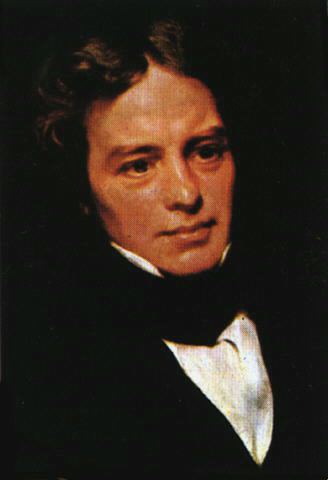History of electrical engineering
Electricity has been a subject of scientific interest since at least the early 17th century. The first electrical engineer was probably William Gilbert who designed the versorium: a device that detected the presence of statically charged objects. He was also the first to draw a clear distinction between magnetism and static electricity and is credited with establishing the term electricity. In 1775 Alessandro Volta's scientific experimentations devised the electrophorus, a device that produced a static electric charge, and by 1800 Volta developed the voltaic pile, a forerunner of the electric battery.
However, it was not until the 19th century that research into the subject started to intensify. Notable developments in this century include the work of Georg Ohm, who in 1827 quantified the relationship between the electric current and potential difference in a conductor, Michael Faraday, the discoverer of electromagnetic induction in 1831, and James Clerk Maxwell, who in 1873 published a unified theory of electricity and magnetism in his treatise Electricity and Magnetism.
During these years, the study of electricity was largely considered to be a subfield of physics. It was not until the late 19th century that universities started to offer degrees in electrical engineering. The Darmstadt University of Technology founded the first chair and the first faculty of electrical engineering worldwide in 1882. In the same year, under Professor Charles Cross, the Massachusetts Institute of Technology began offering the first option of Electrical Engineering within a physics department. In 1883 Darmstadt University of Technology and Cornell University introduced the world's first courses of study in electrical engineering, and in 1885 the University College London founded the first chair of electrical engineering in the United Kingdom. The University of Missouri subsequently established the first department of electrical engineering in the United States in 1886.
During this period, the work concerning electrical engineering increased dramatically. In 1882, Edison switched on the world's first large-scale electrical supply network that provided 110 volts direct current to fifty-nine customers in lower Manhattan. In 1884 Sir Charles Parsons invented the steam turbine which today generates about 80 percent of the electric power in the world using a variety of heat sources. In 1887, Nikola Tesla filed a number of patents related to a competing form of power distribution known as alternating current. In the following years a bitter rivalry between Tesla and Edison, known as the "War of Currents", took place over the preferred method of distribution. AC eventually replaced DC for generation and power distribution, enormously extending the range and improving the safety and efficiency of power distribution.
The efforts of the two did much to further electrical engineering—Tesla's work on induction motors and polyphase systems influenced the field for years to come, while Edison's work on telegraphy and his development of the stock ticker proved lucrative for his company, which ultimately became General Electric. However, by the end of the 19th century, other key figures in the progress of electrical engineering were beginning to emerge.



In this Blog you have implemented very useful and shareable information. And Now we also give you very informative information regarding CLICK HERE
ReplyDelete